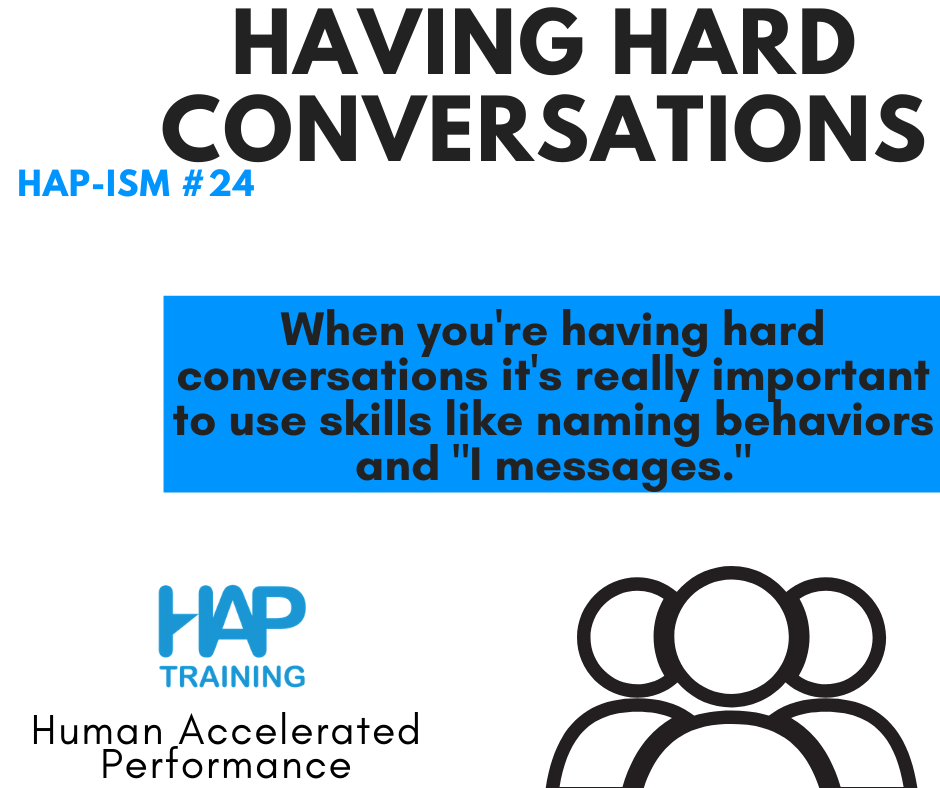What is Naming a Behavior? Why should we Name Behaviors when communicating?
In our last blog we talked about checking-in, and how we show up for things or if we can show up for things in that moment. When we have hard conversations it’s extremely important to name behaviors. Naming Behaviors is a great way to discuss your view of what you saw.
This allows you the own your perspective and helps keep people present. Nobody gets to tell you what you feel or how you saw a situation. It’s important to use I statements and to own your perspective in the conversation. Steering away from “you statements” or “pointy finger syndrome” is extremely important to what happens in driving a conversation forward.

Use this skill when you’re in a tough conversation and you need to speak to an issue without attributing blame, guilt or personal attack. Speak to the tensions by labeling what you’ve seen and experienced. Lean on your own understanding of the conversation and on curiosity in order to understand someone else’s intent. Remember, it’s not about showing the other person that they’re wrong. It’s about showing them the behavior that isn’t tolerated and how to change or fix the behavior without attributing shame.

Naming behaviors should utilize “I messages”, so what are “I messages”?
An I message is when you preface what you say with I want or I feel, like we talked about above… I messages are a great way to explain your perspective and drive the conversation forward without shame or guilt.

Utilize a combination of skills including naming behaviors, checking-in, frontloading, curiosity and so much more to ensure that you’re driving culture, changing behaviors, and creating the impact in your team, business, or family that you want.
Remember life is all about relationships. It’s just a complicated network of relationships that has to be managed by our brains… If we don’t have a framework to deal with our relationships well we won’t thrive. HAP is designed to help us thrive, it’s designed to help us manage those relationships and to create the biggest impact we can with our live’s, teams, businesses, families… it’s imperative we focus on our relationships now more than ever to create and drive world culture and change.
Start with “I statements” and naming behaviors and see if this changes your relationships today!
